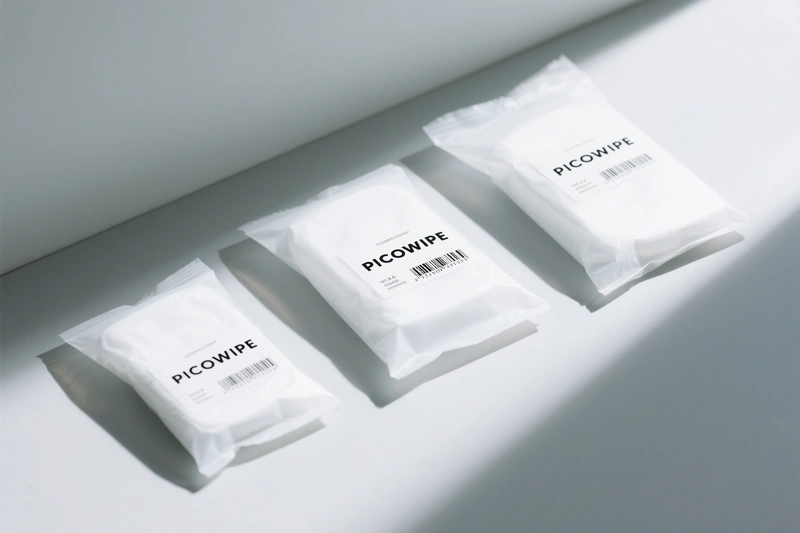By [email protected] — Charting the depths of expertise
4 Methods for Antistatic Cleanroom Wipes
The industry currently employs several methods to achieve an antistatic effect in cleanroom wipes:
1. Incorporating Conductive Fibers
This is one of the most common and durable antistatic methods. The principle involves blending or weaving conductive fibers (such as carbon, metallic, or composite conductive fibers) with standard fibers (like polyester or nylon) at specific intervals during the fabric formation process.
Principle: The conductive fibers form a conductive network within the fabric. When the cleanroom wipe generates static electricity through friction, these fibers rapidly conduct, dissipate, or neutralize the static charge, effectively preventing its accumulation. Advantages: The antistatic performance is long-lasting and stable, unaffected by environmental humidity, and maintains its effectiveness even after repeated washing. Common Forms: Conductive yarns are typically woven in a stripe or grid pattern. The smaller the gap between them, the better the conductivity.
2. Surface Treatment
This method involves applying a layer of antistatic agent to the surface of the cleanroom wipe during the finishing stage, using either chemical or physical means.
Padding Method: The cleanroom wipe is immersed in a solution containing an antistatic agent, and pressure is applied evenly with rollers to ensure the agent adheres to the fiber surface, followed by drying and curing. Spraying Method: An antistatic agent solution is uniformly sprayed onto the surface of the cleanroom wipe using a spray gun. Coating Method: A slurry containing antistatic components is coated onto the surface to form an antistatic film.
Types and Principles of Antistatic Agents:
Surfactants: These agents have hydrophilic groups that absorb moisture from the air, forming a continuous conductive water film on the fiber surface. This lowers the surface resistance and accelerates static dissipation. Conductive Polymers: Materials like polyaniline or polypyrrole are inherently conductive and can form a conductive layer on the fiber surface. Advantages: The process is relatively simple and cost-effective. Disadvantages: The durability of the antistatic performance is poor and may degrade with washing and friction. Additionally, small amounts of the agent may shed, potentially causing chemical contamination in extremely sensitive cleanroom environments.
3. Chemical Modification
This is a more advanced technique that grafts antistatic functional monomers onto the macromolecular chains of synthetic fibers through a chemical reaction, giving the fibers themselves permanent antistatic properties.
Graft Polymerization: Using radiation or chemical initiators to trigger a graft polymerization reaction on the fiber surface, attaching hydrophilic or conductive monomers to the fiber molecules. Advantages: The antistatic performance is extremely durable and stable, withstands washing, and has no risk of additive shedding. Disadvantages: The process is complex, technically demanding, and relatively expensive.
4. Multi-Layer Composite Structure
Excellent antistatic effects can also be achieved by combining layers of materials with different functions. For example, a three-layer cleanroom wipe could be designed with a microfiber top layer for wiping performance and low particle generation, a dedicated antistatic middle layer (such as a fabric with conductive fibers or a conductive film), and a clean wiping material for the bottom layer.
How to Choose the Right Antistatic Cleanroom Wipe
Different methods have their pros and cons. Select the most suitable antistatic cleanroom wipe based on your specific needs:
ESD Sensitivity: For Class 100 or higher cleanrooms and areas extremely sensitive to static, prioritize cleanroom wipes made using the conductive fiber integration or chemical modification methods. Cost Budget: Surface-treated cleanroom wipes are less expensive and suitable for applications where long-term antistatic durability is not a high priority. Cleanliness Requirements of the Wiped Object: Ensure the particle generation and ion extractables of the chosen cleanroom wipe meet your requirements to avoid secondary contamination. Durability Needs: If the cleanroom wipe needs to be washed and reused, choose a permanent, wash-resistant antistatic option.


